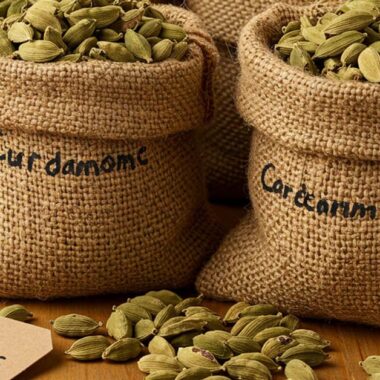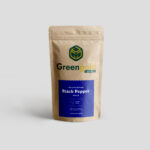Cardamom root rot is a serious fungal disease that can destroy entire crops if not managed properly. It weakens the plant’s roots, causing wilting, yellowing leaves, and stunted growth. Farmers must act quickly to prevent the disease from spreading and protect their harvest.
In this guide, we’ll cover:
✅ What causes root rot
✅ Symptoms to look for
✅ Natural treatments and prevention strategies
1. What Causes Root Rot in Cardamom? 🤔
Root rot is mainly caused by fungal pathogens such as Pythium, Fusarium, and Rhizoctonia. These fungi thrive in:
❌ Overwatered soil – Excess moisture creates an ideal environment for fungal growth.
❌ Poor drainage – Waterlogged soil drowns the roots, making them vulnerable to infection.
❌ Lack of aeration – Compacted soil prevents oxygen flow, weakening the roots.
❌ Contaminated soil – Infected plant debris or soil spreads the fungi.
❌ High humidity and warm temperatures – Fungi spread faster in humid conditions.
🌧️ If your farm has heavy rainfall and poor drainage, your cardamom plants are at a higher risk of root rot!
2. Symptoms of Cardamom Root Rot 🚨
Early detection is crucial to saving affected plants! Look for these signs:
🔍 Early Symptoms:
✅ Yellowing of leaves (especially lower leaves first)
✅ Wilting, even when soil is moist
✅ Slow growth
🔍 Advanced Symptoms:
❌ Black, mushy roots when uprooted
❌ Foul smell from the soil (a sign of rotting roots)
❌ Drying and dying of plant stems
🌱 If multiple plants show these signs, the infection may be spreading underground!
3. How to Treat Root Rot Naturally 🌿🛑
Once root rot sets in, it’s difficult to reverse, but early action can save the plant.
🌱 1. Remove Affected Plants Immediately
🛑 Uproot and destroy severely infected plants to prevent spread.
🛑 Do NOT compost infected plants, as fungi can survive in compost.
💧 2. Improve Soil Drainage
✅ Loosen compacted soil to allow better air circulation.
✅ Mix organic matter (compost, coconut husk, or sand) into the soil to improve drainage.
✅ If the farm is in a low-lying area, create raised beds to avoid waterlogging.
🦠 3. Use Natural Antifungal Treatments
🌿 Neem Cake & Neem Oil Spray – Natural antifungal properties prevent further spread.
🌿 Trichoderma Biofungicide – A beneficial fungus that fights root rot pathogens.
🌿 Cow Dung Manure & Panchagavya – Strengthens plants and boosts immunity against fungal infections.
👨🌾 Application: Apply neem cake to the soil and spray neem oil (diluted in water) weekly.
🌞 4. Reduce Excess Moisture
💧 Avoid overwatering! Water only when the top 2 inches of soil are dry.
💧 Use mulching (dried leaves, straw) to retain moisture without waterlogging.
💧 Ensure irrigation channels are well-maintained.
4. How to Prevent Root Rot in Cardamom? ✅
🌿 Prevention is always better than cure! Follow these best practices to protect your crop:
🚜 1. Choose Resistant Varieties
Select disease-resistant cardamom varieties that thrive in your region.
🌱 2. Rotate Crops
❌ Don’t plant cardamom in the same field every season.
✅ Rotate with legumes or other non-susceptible crops to reduce fungal buildup.
🌿 3. Use Organic Fungicides Regularly
Spray natural fungicides like neem oil, garlic extract, or Trichoderma biofungicide every 15-20 days.
🔍 4. Regular Monitoring & Early Detection
👀 Check roots regularly by uprooting a few plants.
👀 Remove and burn any plant showing early symptoms.
Final Thoughts 💡
✅ Root rot can destroy entire cardamom crops if not managed properly!
✅ The best approach is preventive care – maintain proper drainage, avoid overwatering, and use natural antifungals.
✅ If you suspect root rot, act fast to save healthy plants and prevent further loss.
🌿 Want high-quality cardamom grown with organic methods?
🛒 Buy from Greengold Guide!













